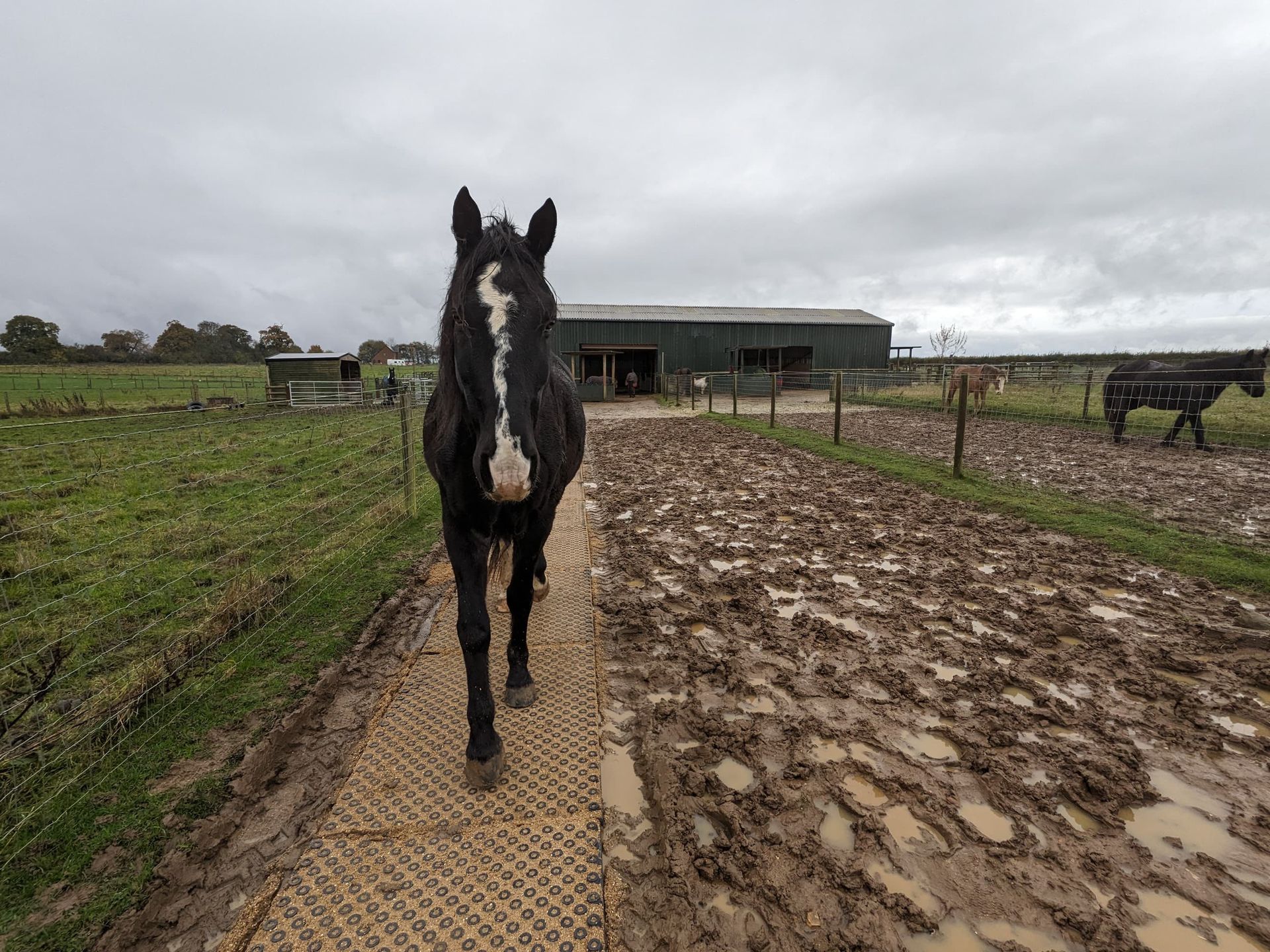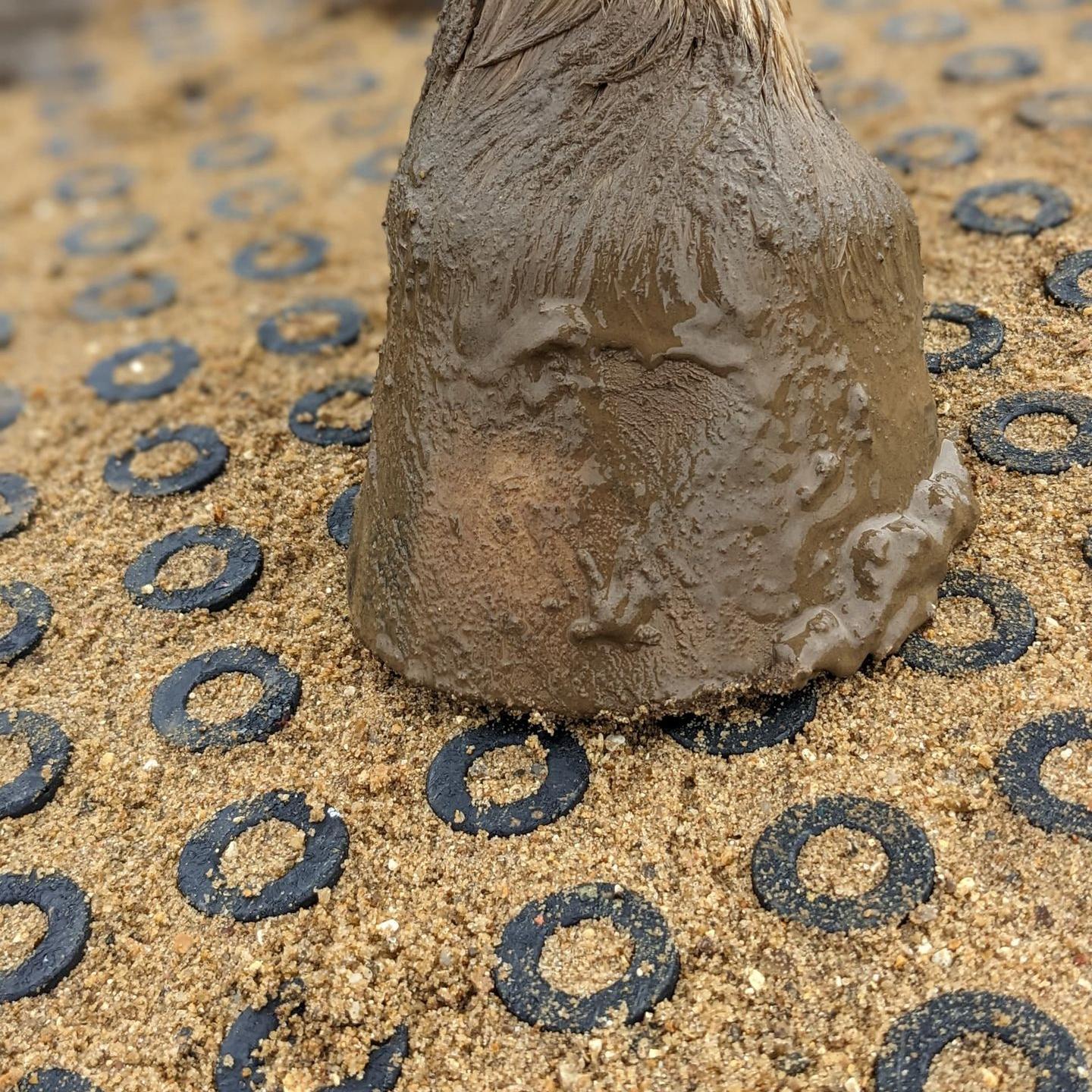Essential Tips for the Upcoming Winter Season
This blog was created in collaboration with Amy Dell-Anthony, the owner of Abbotts View Livery, a renowned track system livery yard. Amy is not only a passionate advocate for equine well-being but also an official ambassador for Jelka Group. With years of hands-on experience in managing horses on a track system and dealing with the challenges of winter weather, Amy’s insights are invaluable for anyone looking to prepare their yard and horses for the colder months ahead.
Winter is right around the corner, bringing with it the dreaded wet months—a time I know many horse owners, myself included, face with a bit of trepidation. The key to making it through winter smoothly is preparation, and the best time to do that is while the weather is still manageable.
Last year’s rain started early here in the South of the UK, lasting from the end of September all the way to June! So, let’s make sure we’re ready to take on mud, rain, ice, and cold.
Whether your horses are in paddocks or on a track system like mine, mud is an inevitable part of winter unless you’re fully surfaced. To stay ahead of the weather, it’s crucial to put strategies in place now, before the mud arrives. But winter isn’t just about mud; we’ll also be dealing with plummeting temperatures and sudden weather changes. Don’t worry, though—here are some of my top tips to help you and your horses stay comfortable and well-prepared.

Invest in Hardstanding or Mud Management Solutions
One of the most important things I’ve found is having hardstanding areas. Whether you opt for permanent hardstanding or mud management solutions like Top Clean Mats, having a solid, mud-free space is essential for both you and your horses. At Abbotts View Livery, we use a mix of limestone hardstanding and Jelka Group’s HIT Top Clean Mud Mats to create stable, mud-free platforms and pathways.
Last year, the rain came early, and I had to lay two pallets of Jelka mud mats in already saturated mud. While they’ve worked brilliantly, it’s far better to install these mats when the ground is dry to keep them level. This summer, I’ve laid even more mats around our hay-feeding areas, giving our horses clean, stable spaces for winter.
For those of you considering building permanent hardstanding, now’s your last chance to get the groundwork done before the weather changes. My Horse Track Systems guidebook offers step-by-step instructions if you’re planning for the long term.

Insulate Water Trough Pipes
Frozen water troughs are a winter nightmare, but I’ve found a simple solution—insulating the pipes leading to your water troughs. This helps prevent freezing and ensures your horses always have access to water. At Abbotts View, we keep our troughs under cover in the barn, which not only helps prevent algae build-up in the warmer months but also stops them from freezing solid in winter. If freezing has been an issue for you, now might be the time to consider moving your water points or adding insulation.
Jelka’s insulated troughs are also a game-changer for this. These troughs use advanced insulation technology to maintain a stable temperature, so our horses always have fresh, unfrozen water, even on the coldest days. Check out the ISOBAR 250 here!
Check Your Rugs
Most horses, especially if they’re left to grow a full winter coat, cope well without rugs. However, clipped horses or those that are older or medically compromised may need extra protection. Make sure last year’s rugs are clean and re-waterproofed before the weather takes a turn, or look for new ones if needed. You might still find some great deals on winter rugs right now!
Prepare Your Hay for Winter Feeding
By now, most of this year’s hay has been harvested and stored away. If you use wrapped hay like we do, it’s best to let it ferment for 6–8 weeks before feeding it to your horses. Dry hay can be used immediately as long as it’s been baled and dried properly. When introducing this year’s hay, I recommend mixing it with last year’s batch to help your horses adjust gradually. Horses have sensitive digestive systems, and this gradual shift helps prevent any digestive upsets like loose droppings or, worse, colic.
Adjust Feed for Winter Weight Management
As the temperatures drop and your horse starts growing its winter coat, some might need additional feed to maintain their condition. If you have a horse that struggles to keep weight on during winter, now’s the time to start increasing their feed gradually. On the flip side, winter is a great time to let those easy keepers naturally lose a bit of weight before spring grazing begins!
Service Your Clippers
If you clip your horses in winter, make sure your clippers are ready to go. I always get my blades sharpened and have my clippers serviced before the season starts. Clipping is especially helpful for horses in full work, but I also use it to help manage weight in some of our ponies.
Winter can be a challenging time for horse owners, but with the right preparation, it doesn’t have to be a struggle. By getting things sorted now, while the weather is still on our side, you’ll set yourself and your horses up for a smoother, more comfortable winter. Stay ahead of the mud, manage the cold, and keep your horses happy and healthy with these tried-and-tested tips from Abbotts View Livery.